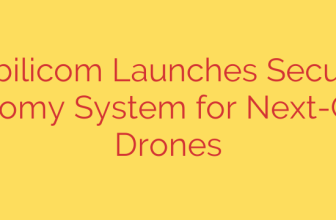
Cyberattack on Decoy Water Plant Exposes Growing Threat to Critical Infrastructure
In a chilling demonstration of modern cyber warfare, a hacktivist group recently claimed responsibility for a disruptive attack on a U.S. water utility. The group released videos showing them manipulating system controls, seemingly creating a dangerous situation by altering water flow and pressure. This incident immediately raised alarms about the vulnerability of our nation’s most vital services. However, the attack had a crucial twist: the target wasn’t real.
The hacktivists had been lured into a sophisticated decoy system, a digital trap designed to look and feel exactly like the control system of a real water treatment plant. While the attack caused no real-world harm, it serves as a critical wake-up call, offering invaluable insight into the methods and motivations of those targeting essential services.
The Anatomy of a Deceptive Attack
The attackers, identified as a pro-Russian hacktivist collective, believed they had successfully infiltrated and disrupted a key piece of U.S. infrastructure. They targeted a Human-Machine Interface (HMI)—the digital dashboard operators use to monitor and control industrial equipment. By gaining access, they were able to manipulate settings and record their actions as proof of their success.
What they didn’t know was that their every move was being monitored by cybersecurity researchers. The entire “water plant” was an elaborate honeypot, a security mechanism designed to attract, deceive, and analyze malicious actors. This controlled environment allowed experts to study the attackers’ techniques, tools, and procedures without any risk to public safety.
What We Learned from a Foiled Plot
This carefully orchestrated event highlights several urgent realities about the current state of cybersecurity for critical infrastructure.
Hacktivists Are Targeting Industrial Control Systems (ICS): The era of hacktivism being limited to website defacement is over. Politically and ideologically motivated groups are now actively targeting Operational Technology (OT)—the hardware and software that controls everything from power grids and water pipelines to manufacturing plants.
Simple Vulnerabilities Create Major Risks: The attackers gained access through a publicly exposed and easily compromised interface. This proves that even technically unsophisticated attacks can succeed if basic security hygiene is neglected. In a real-world scenario, the consequences of such a breach could be catastrophic, leading to equipment damage, service disruptions, or even public health crises.
Threat Intelligence is a Powerful Defensive Tool: The use of a honeypot in this scenario was a strategic victory. It not only diverted attackers from legitimate targets but also provided a treasure trove of intelligence. Security professionals now have a clearer picture of this specific group’s capabilities, helping to build better defenses against their future campaigns.
Actionable Security Measures to Protect Critical Infrastructure
While this particular incident was contained, it underscores the immediate need for heightened security across all essential sectors. Operators of industrial control systems must act decisively to protect their networks from similar attacks. Here are crucial steps that should be implemented immediately:
- Eliminate Internet Exposure: Industrial control systems should never be directly accessible from the public internet. Segment operational networks from corporate IT networks and use firewalls and demilitarized zones (DMZs) to create strict barriers against unauthorized access.
- Enforce Strong Authentication: Default passwords are a primary entry point for attackers. All system access should require strong, unique passwords and, wherever possible, multi-factor authentication (MFA) to provide an essential layer of security.
- Conduct Regular Security Audits and Vulnerability Scanning: Proactively search for and patch weaknesses in your systems. A consistent program of security assessments can identify vulnerabilities like exposed HMIs or outdated software before malicious actors can exploit them.
- Develop and Practice an Incident Response Plan: Hope is not a strategy. Have a clear, actionable plan for what to do in the event of a breach. This plan should be regularly tested and updated to ensure your team can respond quickly and effectively to minimize damage.
The attack on the decoy plant was not a disaster, but a stark and timely warning. It demonstrates that the threats against our critical infrastructure are real, active, and evolving. Vigilance and proactive defense are no longer optional—they are essential to ensuring the safety and stability of the services we all depend on.
Source: https://www.bleepingcomputer.com/news/security/hacktivists-target-critical-infrastructure-hit-decoy-plant/








